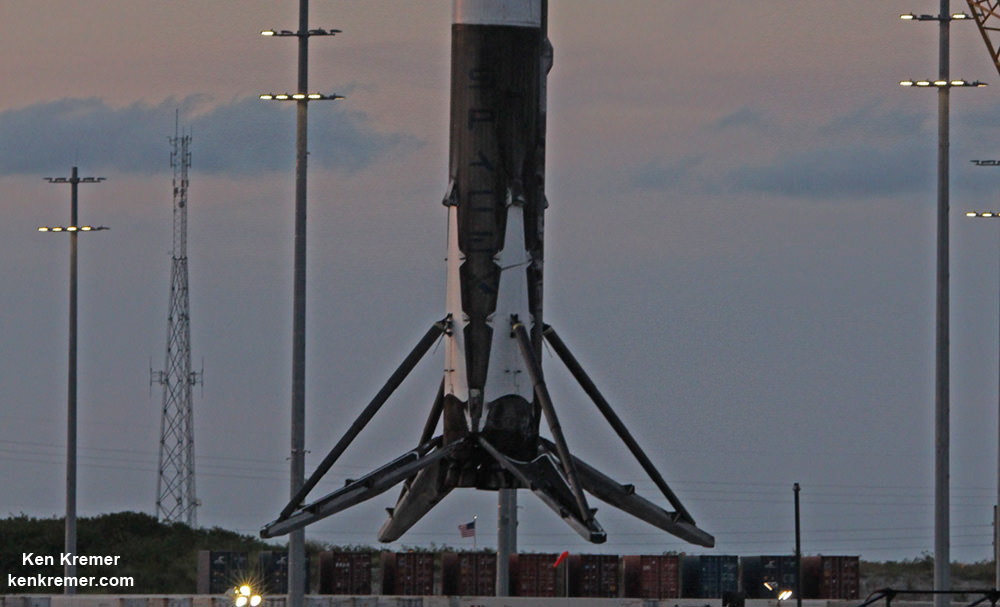
PORT CANAVERAL, FL – The spent SpaceX Falcon 9 first stage booster that sped to space and back and landed safely at sea, ‘lifted off’ for a second time so to speak after CEO Elon Musk’s “Baby Made it Home” to her home port around lunchtime on June 2 – as I witnessed and reported here for Universe Today.
“Yay, baby made it home,” SpaceX CEO and billionaire founder Elon Musk exuberantly tweeted with a link to my port arrival story and photos showing the tilted booster radiantly floating atop the droneship landing platform.
Photos above and below from myself and colleagues capture Falcon’s 2nd ‘lift off’ – this time at dusk on June 2, via crane power as workers hoisted it off its ocean landing platform – with an American flag flying proudly below – onto a ground based work platform to carry out initial processing.
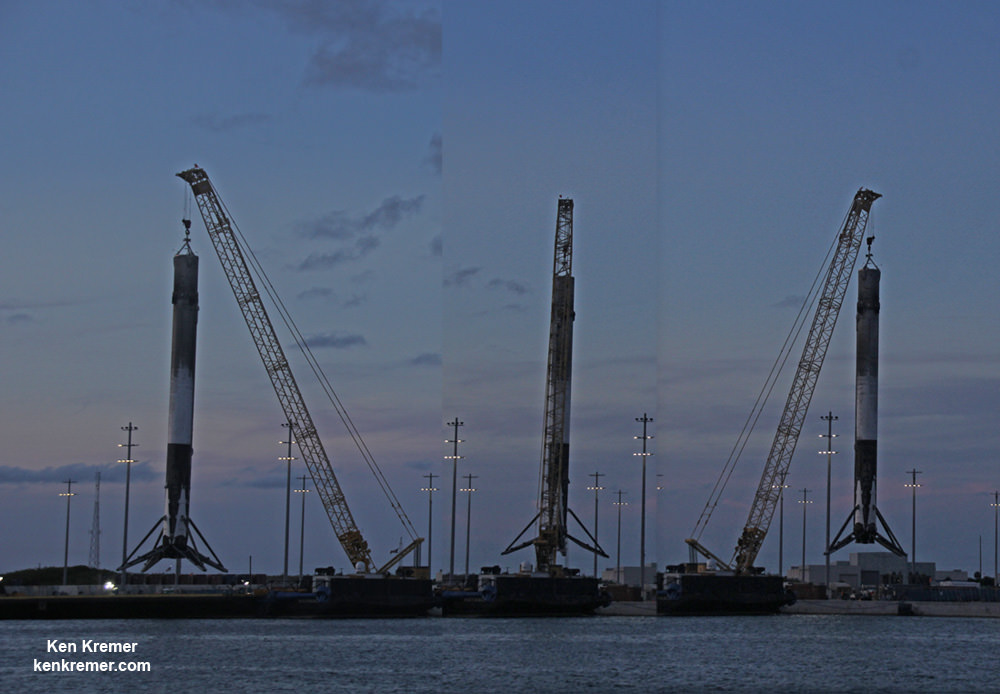
The booster triumphantly entered the waterway into Port Canaveral, Fl by way of the ocean mouth at Jetty Park pier at about 11: 45 a.m. on June 2 under clear blue skies.
It continued sailing serenely along the Port Canaveral channel – towed behind the Elsbeth III tugboat – making a picture perfect tour for lucky spectators for another 30 minutes or so until docking at the SpaceX ground processing facility.
All in all it was quite appropriately an ‘otherworldly’ scene reminiscent of a great scifi movie.
Watch this video from my photojournalist colleague Jeff Seibert.
Video caption: The SpaceX F9 booster from the Thaicom-8 launch returns to Cape Canaveral on June 2, 2016 after completing an at sea landing on the OCISLY drone ship 6 days earlier. A hard landing caused a leg to activate a crush structure and it is tilting about 4 degrees. That is half the booster tilt angle that Elon Musk expected should be recoverable. Credit: Jeff Seibert
The beaming 156-foot-tall Falcon 9 booster had propulsively landed six days earlier atop the specially designed SpaceX ‘droneship’ named “Of Course I Still Love You” or “OCISLY” less than 9 minutes after the spectacular May 27 blastoff.
The Falcon 9 was leaning some 5 degrees or so on the droneship upon which it had landed on May 27 while it was stationed approximately 420 miles (680 kilometers) off shore and east of Cape Canaveral, Florida, surrounded by the vastness of the Atlantic Ocean.

After docking, SpaceX workers then spent the next few hours carefully maneuvering and attaching a pyramidal shaped metal hoisting cap by crane to the top of the 15 story tall first stage – as it was firmly secured to the deck of the droneship via multiple tie downs.
It was a delicately choreographed and cautiously carried out operation, complicated by the fact that this used, returned booster was tilted. The prior two sea landed Falcon 9 boosters landed perfectly upright in April and May.
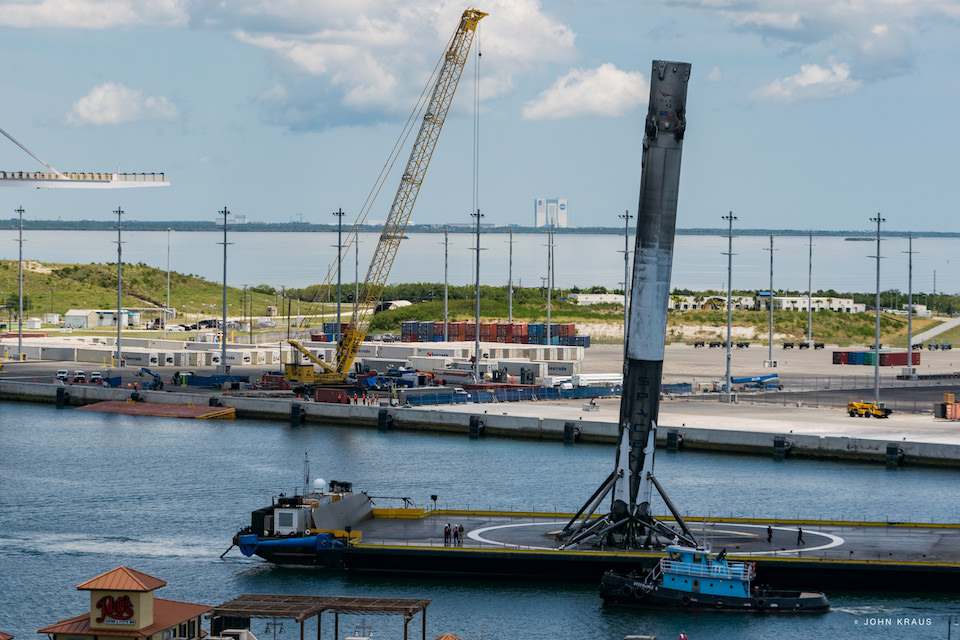
Indeed a pair of technicians had to ride a cherry picker lift to the very top to help fasten the cap securely in place as it was slowly lowered in the late afternoon.
Workers then spent several more hours undoing and removing the tiedowns to the droneship deck, one by one.
Finally and with no fanfare the ‘GO’ command was suddenly given.
At dusk, Falcons 2nd ‘ascent’ began at around 8 p.m. The small group of us patiently watching and waiting all day from across the channel had no warning or advance notice. My guestimate is Falcon rose perhaps 30 to 40 feet.
It was craned over to the right and lowered onto the waiting ground based retention work platform. Altogether the whole movement took some 10 minutes.
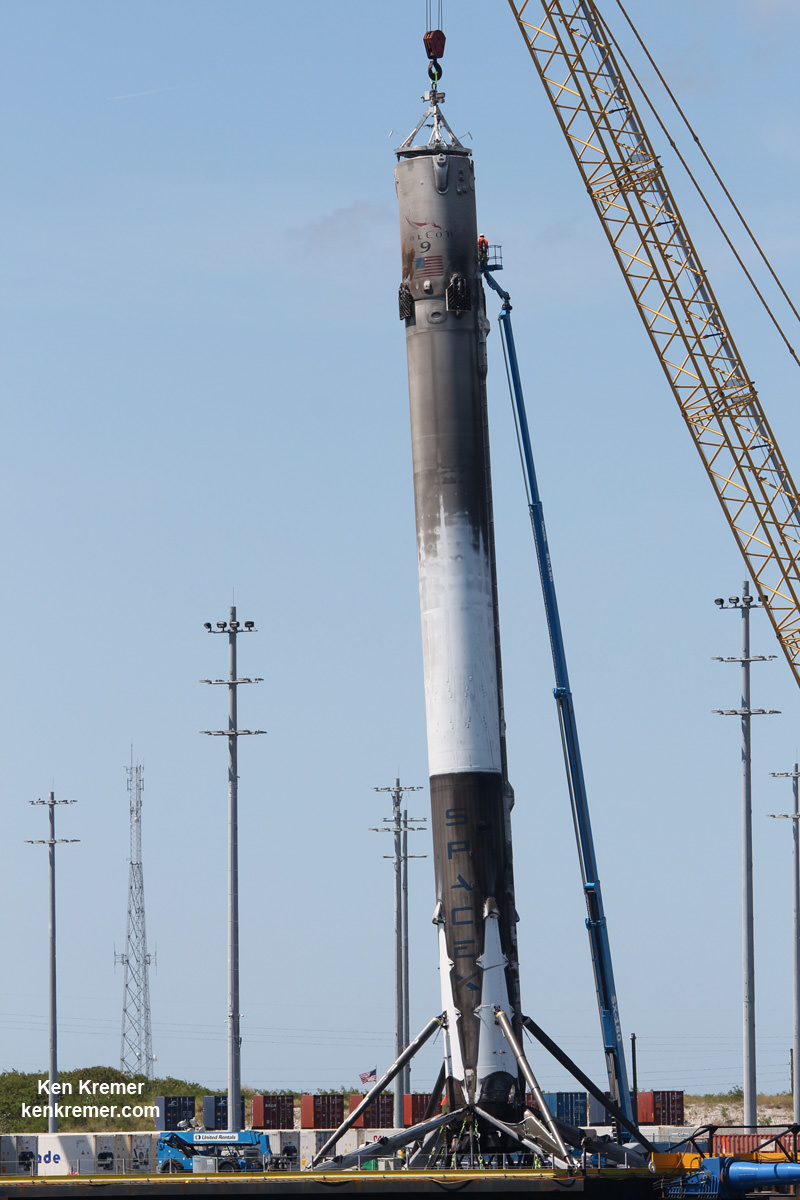
The SpaceX Falcon 9 began its rapid journey to space and back roaring to life at 5:39 p.m. EDT last Friday, May 27, from Space Launch Complex-40 at Cape Canaveral Air Force Station, FL, ascending into sky blue sunshine state skies.
The Falcon 9 was carrying the Thaicom-8 telecommunications satellite to orbit as its primary goal for the commercial launch from a paying customer.
It roared to life with 1.5 million pounds of thrust from the first stage Merlin 1 D engines and successfully propelled the 7000 pound (3,100 kilograms) commercial Thai communications satellite to a Geostationary Transfer Orbit (GTO).
Landing on the droneship was a secondary goal of SpaceX’s visionary CEO and founder Elon Musk.
It was leaning due to the high speed reentry and a touchdown landing speed near the maximum sustainable by the design.
“Rocket landing speed was close to design max & used up contingency crush core, hence back & forth motion,” tweeted SpaceX CEO Elon Musk.
“Prob ok, but some risk of tipping.”
That tilting added significant extra technical efforts by the SpaceX workers to stabilize it at sea and bring it back safely and not tip over calamitously during the six day long sea voyage back to home port.
““Rocket back at port after careful ocean transit. Leaning back due to crush core being used up in landing legs,” SpaceX explained.
What is the crush core?
“Crush core is aluminum honeycomb for energy absorption in the telescoping actuator. Easy to replace (if Falcon makes it back to port),” Musk tweeted during the voyage home.
The landing leg design follows up and improves upon on what was used and learned from NASA’s Apollo lunar landers in the 1960s and 1970s.
“Falcon’s landing leg crush core absorbs energy from impact on touchdown. Here’s what it looked like on Apollo lander,” noted SpaceX
Check out this graphic tweeted by SpaceX.
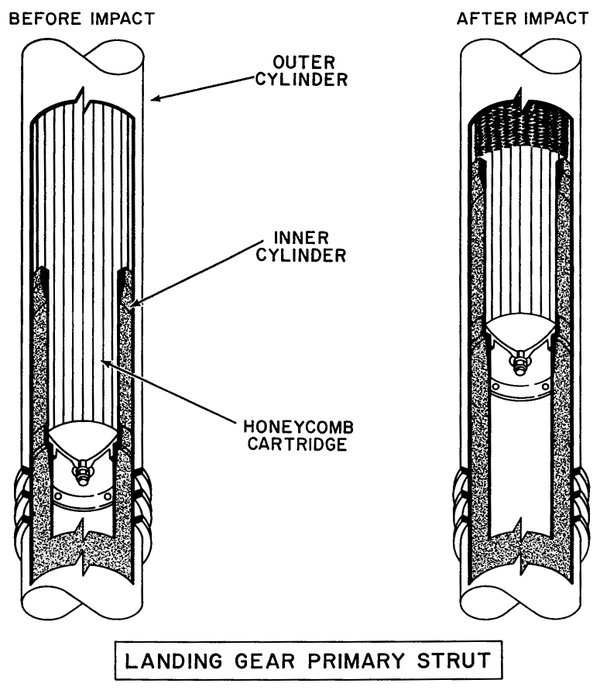
Technicians started removing the quartet of landing legs on Friday. I observed the first one being detached late Friday, June 3.
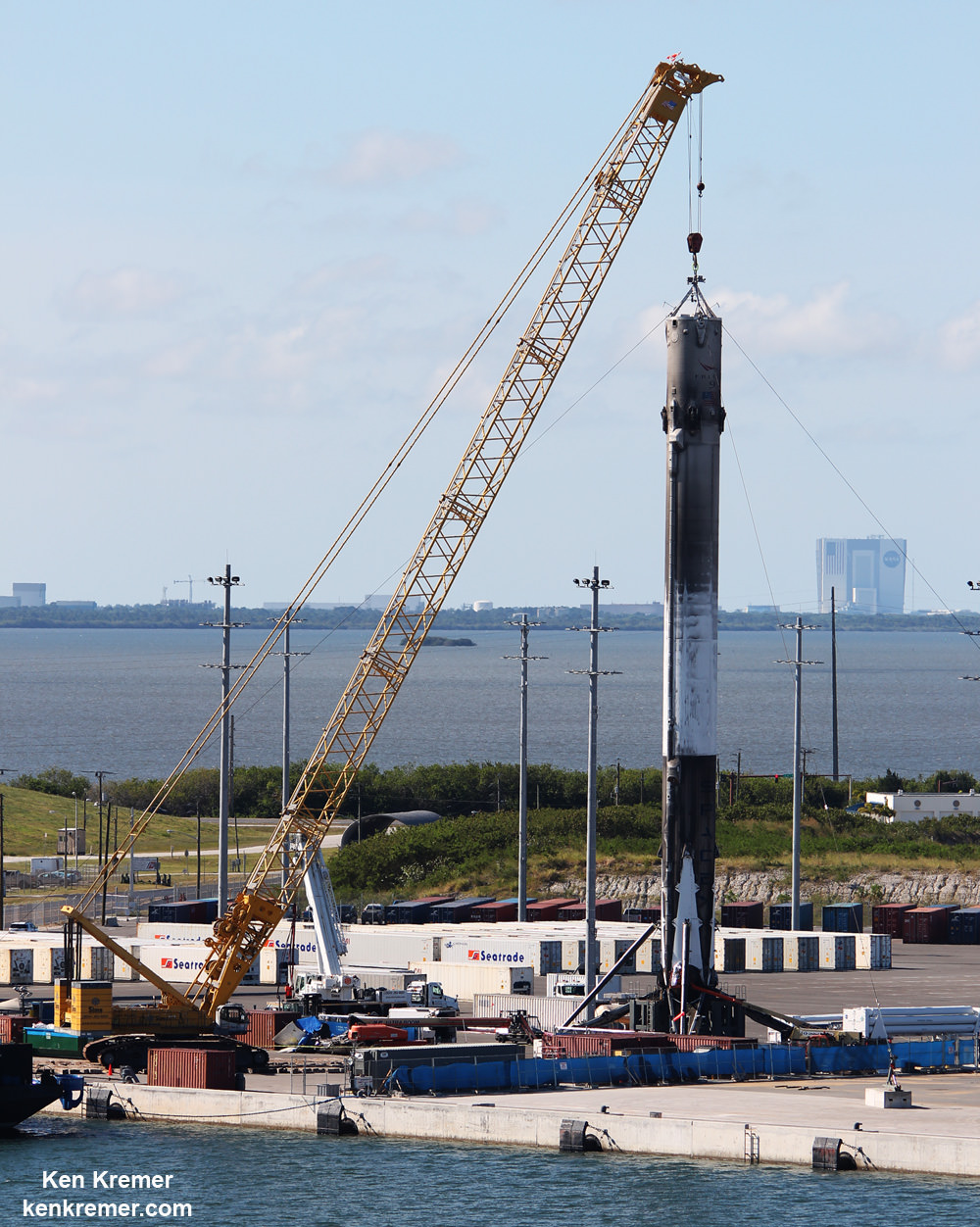
The booster was rotated horizontally after all the legs were removed and transported back to the SpaceX processing hangar at the Kennedy Space Center at Launch Complex 39A.
The three prior landed boosters were all moved to 39 A for thorough inspection, analysis and engine testing. One will be refurbished and recycled for reuse.
Video caption: Thaicom 8 booster is lifted from autounomous drone ship to dry land for transport on 2 June 2016. Time Lapse. Credit: USLaunchReport
Later this year, SpaceX hopes to relaunch one of the recovered first stage boosters.
The SpaceX rockets and recovery technology are all being developed so they will one day lead to establishing a ‘City on Mars’ – according to the SpaceX’s visionary CEO and founder Elon Musk.
Musk aims to radically slash the cost of launching future rockets by recycling them and using them to launch new payloads for new paying customers.
Musk hopes to launch humans to Mars by the mid-2020s.
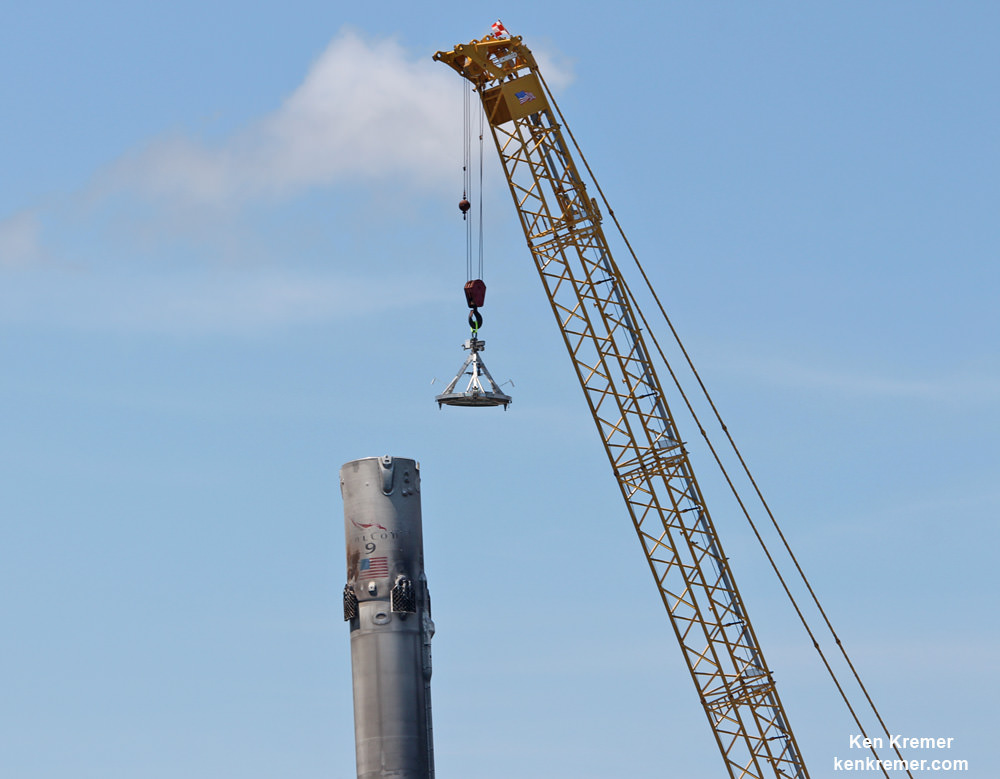
Watch for Ken’s continuing on site reports direct from Cape Canaveral and the SpaceX launch pad.
Stay tuned here for Ken’s continuing Earth and planetary science and human spaceflight news.
………….
Learn more about SpaceX Falcon 9 rocket, ULA Atlas rocket, Orbital ATK Cygnus, ISS, Boeing, Space Taxis, Mars rovers, Orion, SLS, Antares, NASA missions and more at Ken’s upcoming outreach events:
June 8/9: “SpaceX, ULA, SLS, Orion, Commercial crew, Curiosity explores Mars, Pluto and more,” Kennedy Space Center Quality Inn, Titusville, FL, evenings
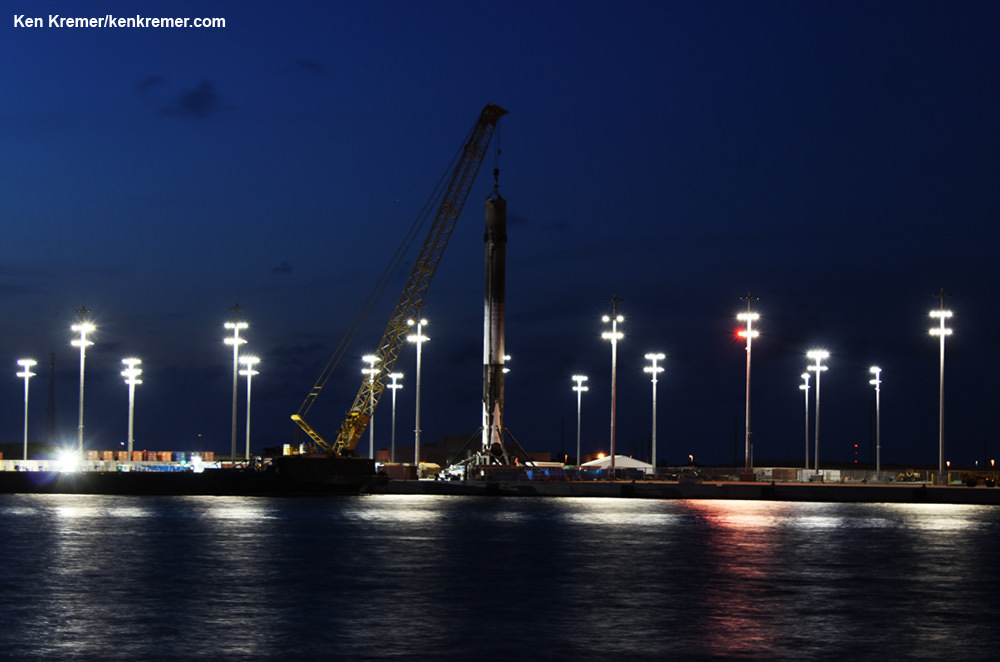
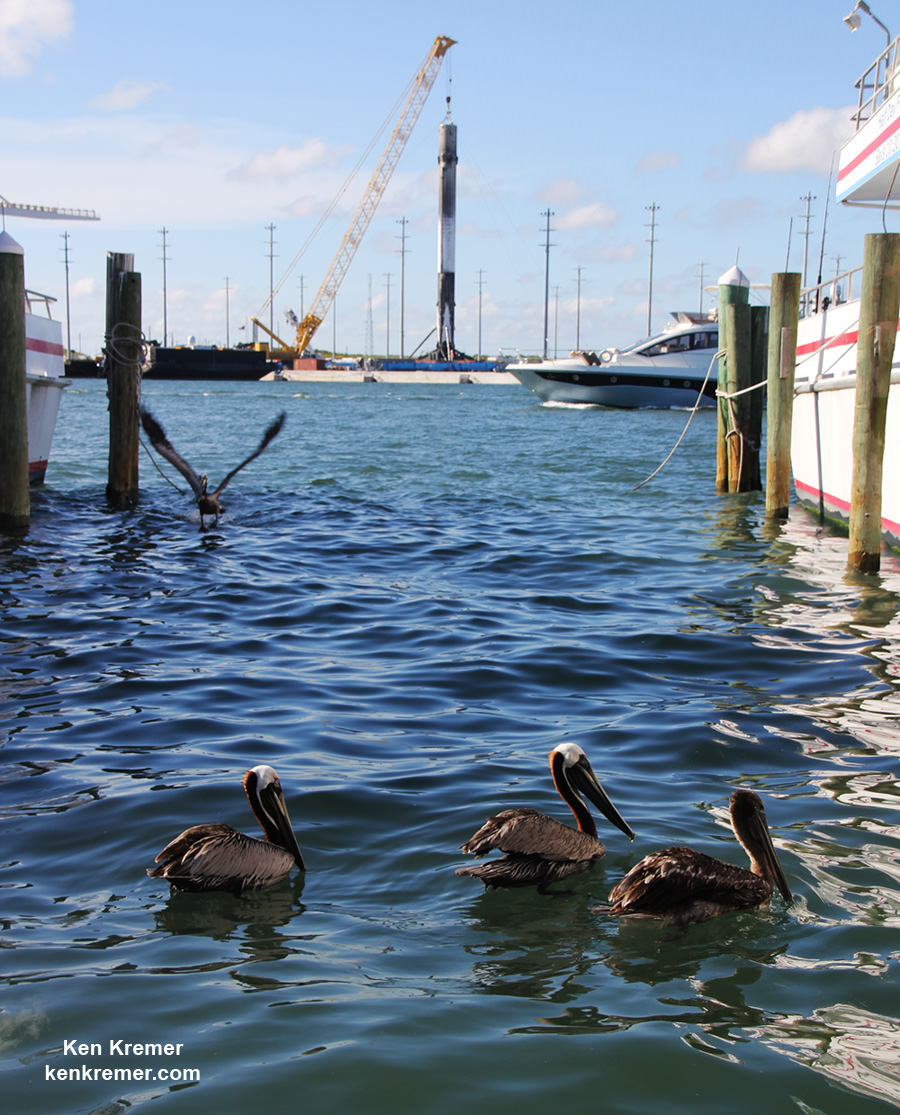
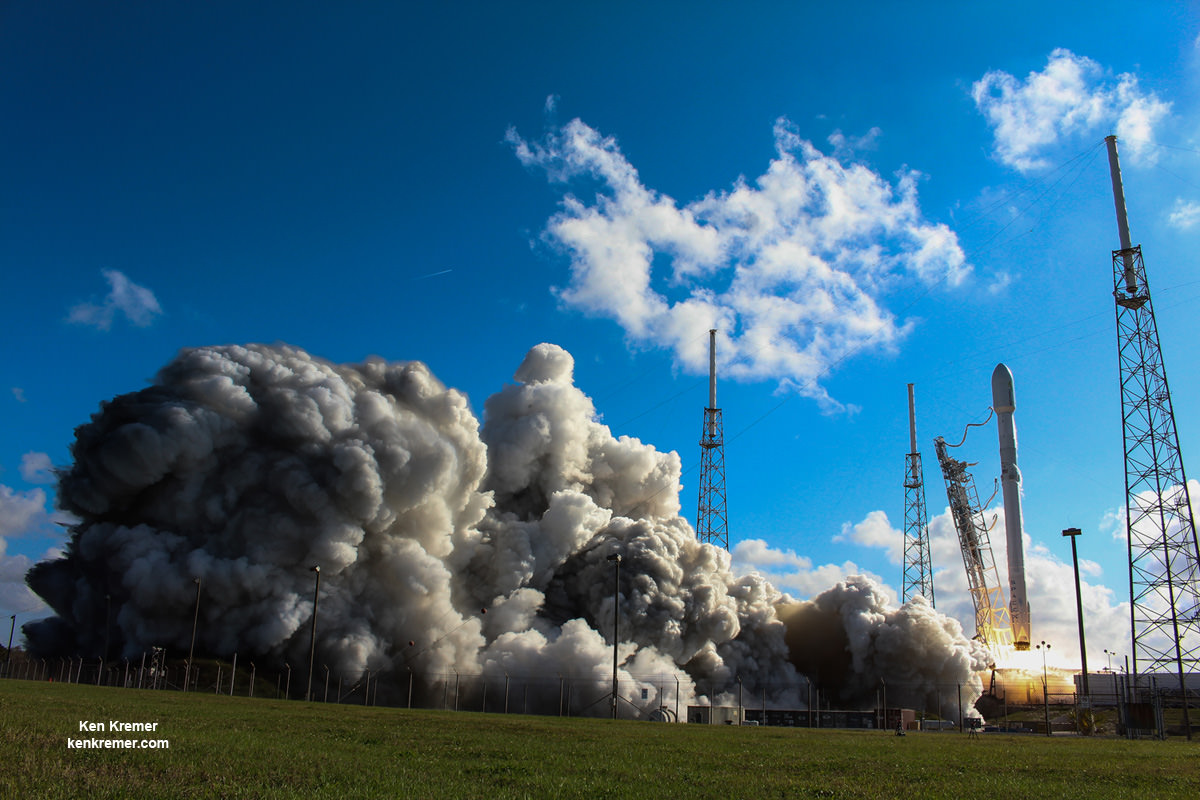
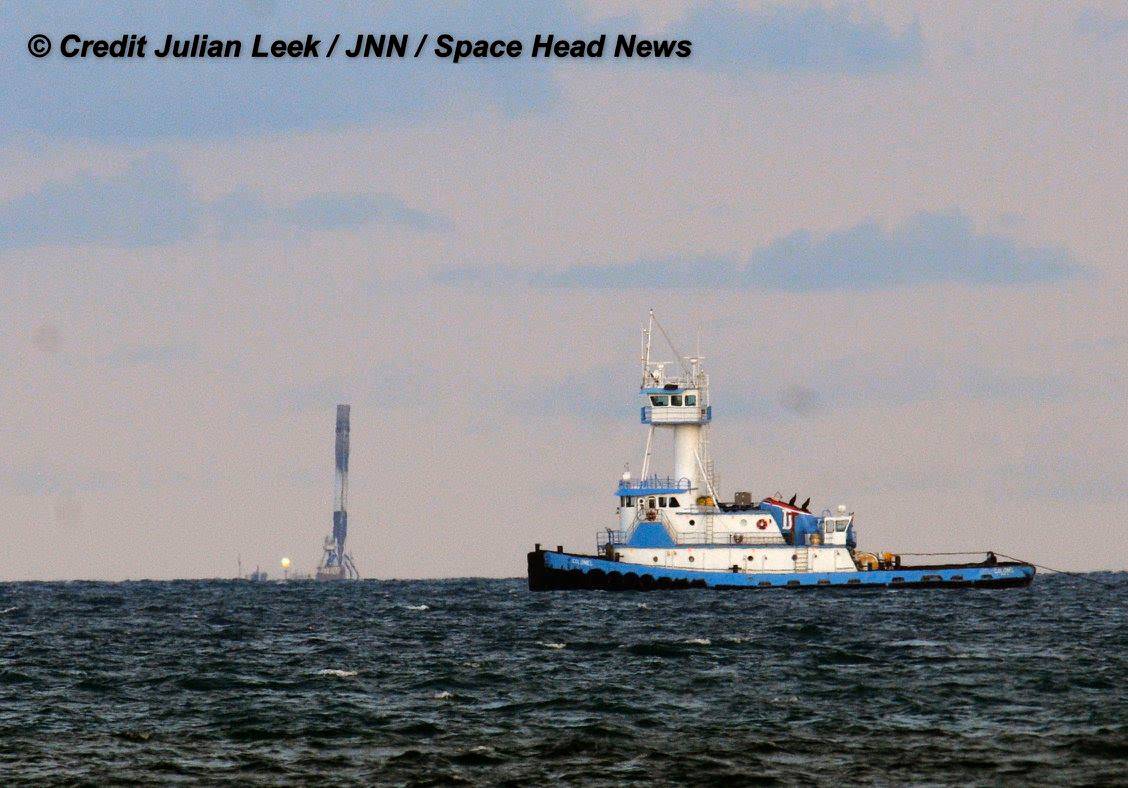
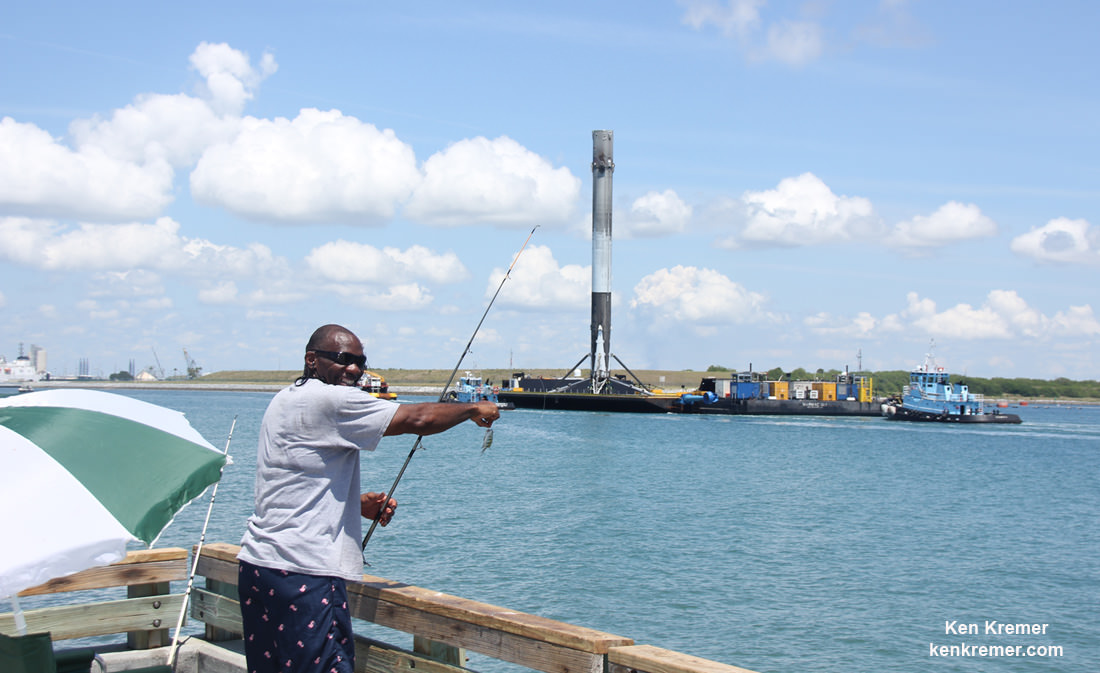

Congrats Mr. Kremer! As a writer – and with dozens of other people covering SpaceX – that link has got to make you feel good. Nice!!
It’s like a scene from a Chris Foss Sci Fi cover